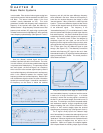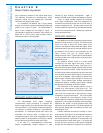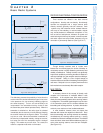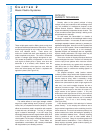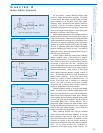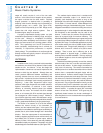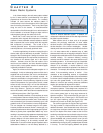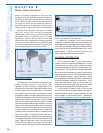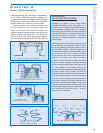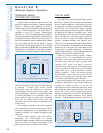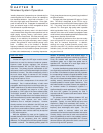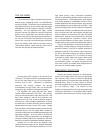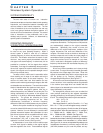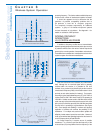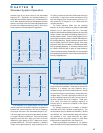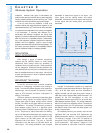
usually operate at "unity" gain overall, that is, no net amplification
occurs. Though a multi-coupler is generally a separate acces-
sory, some receiver designs are equipped with internal antenna
distribution when multiple receiver sections are incorporated in
the same chassis such as modular or card-cage systems.
Stand-alone active antenna splitters can typically feed
up to four receivers from one set of antennas. (See Figure
2-32a.) If more receivers are required, the outputs of one
distribution amplifier can feed the inputs of a second level set of
distribution amplifiers. (See Figure 2-32b.) Each of these can
then feed several receivers. Further active splits are impractical,
due to the potential for increased RF distortion and interference.
21
Selection
and Operation
of Wireless Microphone Systems
C HAPTER 2
Basic Radio Systems
LARGE ROOM/
MUL
TI-ROOM APPLICATIONS
Sometimes it is desired to use a single wireless
transmitter throughout a very large space or in
multiple rooms. It is difficult to get reliable reception
from transmitters in distant rooms or in extremely
large rooms, especially if there are many obstructions
or strong RF interference. A centrally located receiver
antenna may improve the situation. Line-of-sight
transmitter to receiver placement is always the
preferred setup.
If a diversity receiver with detachable antennas is used
the two antennas may be located in different rooms,
though this essentially reduces the receiver mode to
two non-diversity sections. If diversity reception is to
be maintained two antennas may be located in each
room with the use of an antenna combiner.
The "A" antenna in one room is combined with the "A"
antenna in the other room using an antenna
combiner. The "B" antennas are similarly connected
and the "A" and "B" combiner outputs are fed to the
receiver "A" and "B" antenna inputs. (See Figure 2-30.)
It is also possible to use multiple receivers and
antennas tuned to the frequency of a single transmitter.
The audio outputs of the receivers can then be
combined in a mixer to allow continuous pickup of the
signal from multiple locations. However, some type of
audio level control must be employed since the audio
level of such a system will increase by 3dB each time
the number of active receivers doubles. That is, if the
transmitter is picked up by two receivers at the same
time the overall audio level will be 3dB louder than
when picked up by only one receiver. Automatic
mixers can control this effect.
Figure 2-30: multi-room antenna distribution
Figure 2-31: passive antenna distribution
Figure 2-32a: active antenna distribution (one level)
Figure 2-32b: active
antenna distribution (two level)
Figure 2-33: antenna amplifiers



